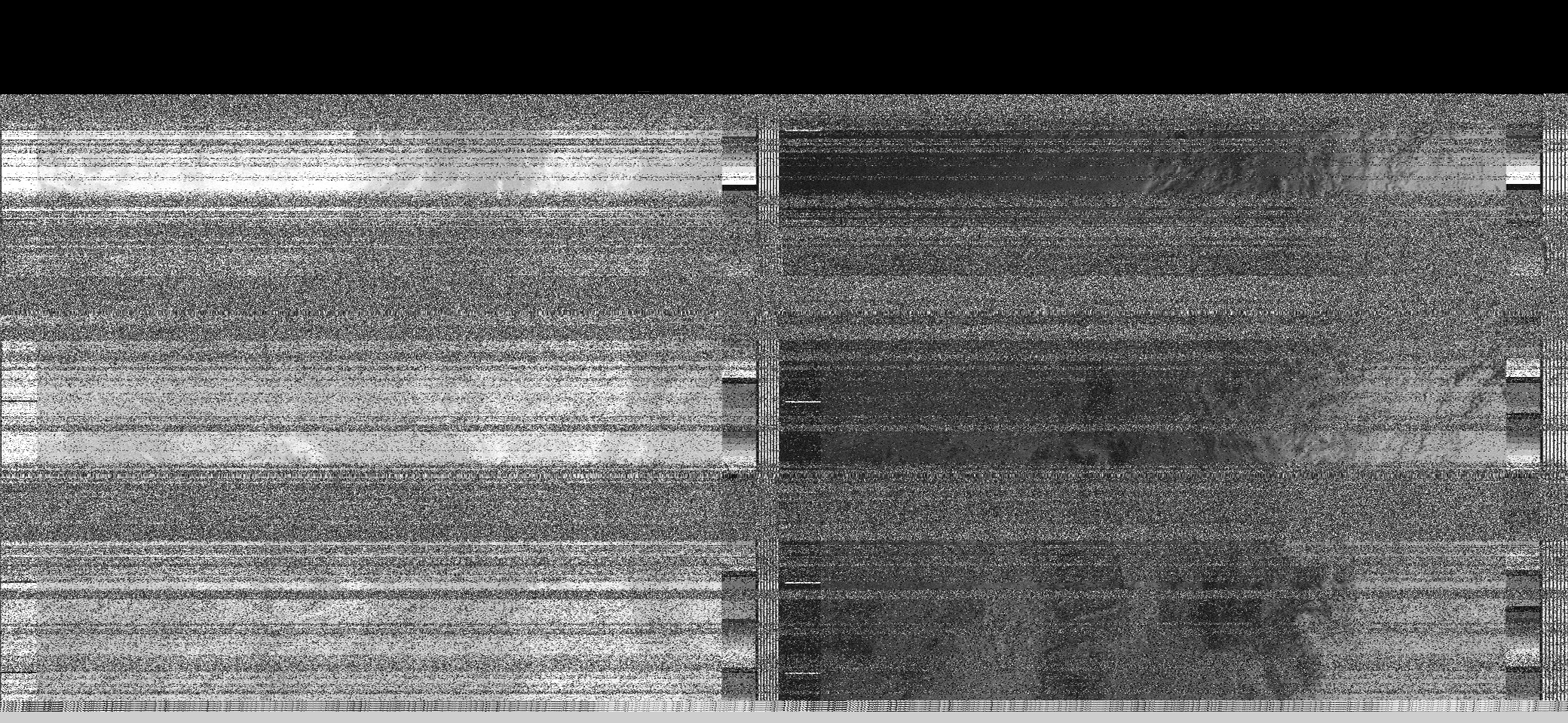2020 09 23

images gathered with an rtlsdr usb stick, garbage antennas, good antennas, and wxtoimg
under construction, if anyone knows more about the auto wxtoimg web maker, or a tool that would do the same thing, please get at me aspaceman@gmail.com

four passes in one day caught, during a hurricane








adjusted the yagi a little more south results weren't much better the satellite was directly overhead, feel like i wasted a good passnoaa-15 was heading my way 20 minutes after i tried the yagi again didn't want to move the yagi so i finally built this simple antenna

didn't have enough time to make a stand so i ran up on the roof with laptop using WXTRACK, knowing where north is, and the beeps froms SDR# i tracked the satellite in the sky and maintained a pretty decent signal i am happy my best signal was caught with an antenna made of junk in 5 minutes also just found the sea surface temperature option in wxtoimg, i like it a lot


set up a yagi on my apartment's empty flagpole yagi is a directional type antenna and needs be oriented with the source satellites are moving targets so tracking would be needed turns out yagis work at 90 degrees as well as the signal was best overhead - looking into meteor signals, can't even get the program to stay open. not much luck yet - looking at sdr# dde tracking - i can't find any scheduler button, seems i'm missing something


i had 20 minutes till noaa 18 flew over and rushed a hunk of metal onto the roof to see if grounding the tram 1185 would clean things up. also was snowing, and made me cut corners. could have been closer to the center of roof this time i used the record function built into SDR# and imported the audio to NOAA-APT this program is a lot simpler and faster than wxtoimg, but does not seem to have the live processing i am not sure what else to do with this program but i am impressed with how simple it is. i might still need wxtoimg to try and get the land outline overlaid and include false colour/ anyway, was a test, will probably continue using wxtoimg for auto downloads until i understand morethis is a with "no sync" selected. i believe the shape of this file can tell me a bunch that the synced version can't. but i can't read static yet ha

turns out i had set the cable to listen to itself instead of output to the speaker by mistake now that's gone it's looking better. had a few good passes today very windy and cloudy and night for all these, not sure how much that changes things same equipment as before and antenna still on apartment roof



picked it back up and not sure what i am forgetting instead of trees being in the way i am in town, with antenna on the roof flat topped building, low flat area there's a usb extenstion cord i didn't use last time either




pretty happy that this worked, even if it's so fuzzy it was cloudy and i held the antenna with my hand --radio tower is on backburner for now --new photos when life permits --will take notes next time and give some steps



HARDWARE: ANTENNA TRAM 1185 ANTENNA CABLES ADAPTOR ANT. TO MCX MALE RTLSDR DONGLE PICK ONE OF THESE USB EXTENSION COR WINDOWS LAPTOP STEPS: DOWNLOAD AND INSTALL: A. SDR program - SDR# B. weather satellite image processing software - WXTOIMG C. virtual audio cable - VB VIRTUAL AUDIO CABLE RUN A - OUTPUT TO C TUNE A TO SATELITTE FREQ RUN B - INPUT FROM C SET B TO AUTOPROCESS/RECORD AND CREATE IMAGES OTHER SOURCES: https://www.planetary.org/blogs/jason-davis/2015/20150921-how-to-download-weather.html https://www.rtl-sdr.com/receiving-noaa-weather-satellite-images/
HARDWARE: ANTENNA TRAM 1185 ANTENNA CABLES ADAPTOR ANT. TO MCX MALE RTLSDR DONGLE PICK ONE OF THESE USB EXTENSION COR WINDOWS LAPTOP STEPS: DOWNLOAD AND INSTALL: A. SDR program - SDR# B. weather satellite image processing software - NOAA-APT RUN A - TUNE TO SATELITTE FREQ (WHEN SATELLITE OVERHEAD) RECORD WAV AUDIO OF SIGNAL USING SDR# RUN B - PROCESS WAV FILE OTHER SOURCES: https://noaa-apt.mbernardi.com.ar/